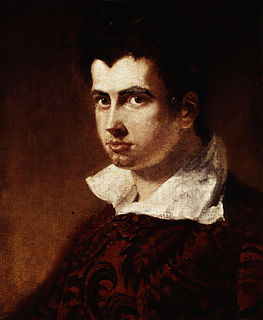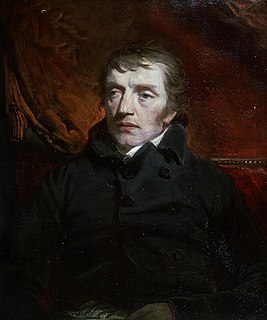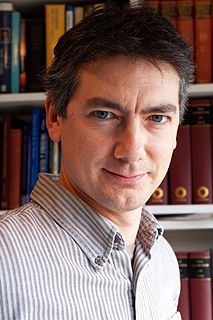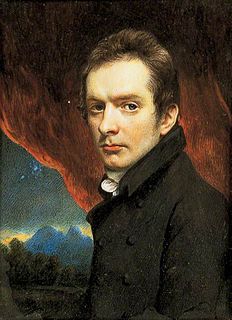Related Research Articles

John Keats was an English poet of the second generation of Romantic poets, with Lord Byron and Percy Bysshe Shelley, although his poems had been in publication for less than four years when he died of tuberculosis at the age of 25. They were indifferently received in his lifetime, but his fame grew rapidly after his death. By the end of the century he was placed in the canon of English literature, strongly influencing many writers of the Pre-Raphaelite Brotherhood ; the Encyclopædia Britannica of 1888 called one ode "one of the final masterpieces". Jorge Luis Borges named his first encounter with Keats an experience he felt all his life. Keats had a style "heavily loaded with sensualities", notably in the series of odes. Typically of the Romantics, he accentuated extreme emotion through natural imagery. Today his poems and letters remain among the most popular and analysed in English literature – in particular "Ode to a Nightingale", "Ode on a Grecian Urn", "Sleep and Poetry" and the sonnet "On First Looking into Chapman's Homer".

William Hazlitt was an English essayist, drama and literary critic, painter, social commentator, and philosopher. He is now considered one of the greatest critics and essayists in the history of the English language, placed in the company of Samuel Johnson and George Orwell. He is also acknowledged as the finest art critic of his age. Despite his high standing among historians of literature and art, his work is currently little read and mostly out of print.

James Henry Leigh Hunt, best known as Leigh Hunt, was an English critic, essayist and poet.
William Carew Hazlitt, known professionally as W. Carew Hazlitt, was an English lawyer, bibliographer, editor and writer. He was the son of the barrister and registrar William Hazlitt, a grandson of the essayist and critic William Hazlitt, and a great-grandson of the Unitarian minister and author William Hazlitt. William Carew Hazlitt was educated at the Merchant Taylors' School and was called to the bar of the Inner Temple in 1861.

John Forster was an important Victorian English biographer and literary critic.

William Gifford was an English critic, editor and poet, famous as a satirist and controversialist.

Sir Andrew Jonathan Bate, CBE, FBA, FRSL, is a British academic, biographer, critic, broadcaster, poet, playwright, novelist and scholar. He specialises in Shakespeare, Romanticism and Ecocriticism. He is Foundation Professor of Environmental Humanities in a joint appointment of the College of Liberal Arts, the School of Sustainability and the Global Futures Laboratory at Arizona State University, as well as a Senior Research Fellow at Worcester College in the University of Oxford, where he holds the title of Professor of English Literature. From 2017 to 2019 he was Gresham Professor of Rhetoric in the City of London. Until September 2019 he was Provost of Worcester College, Oxford. He was knighted in 2015 for services to literary scholarship and higher education.
The Morning Chronicle was a newspaper founded in 1769 in London. It was notable for having been the first steady employer of essayist William Hazlitt as a political reporter and the first steady employer of Charles Dickens as a journalist. It was the first newspaper to employ a salaried woman journalist Eliza Lynn Linton; for publishing the articles by Henry Mayhew that were collected and published in book format in 1851 as London Labour and the London Poor; and for publishing other major writers, such as John Stuart Mill.

Blackwood's Magazine was a British magazine and miscellany printed between 1817 and 1980. It was founded by the publisher William Blackwood and was originally called the Edinburgh Monthly Magazine. The first number appeared in April 1817 under the editorship of Thomas Pringle and James Cleghorn. The journal was unsuccessful and Blackwood fired Pringle and Cleghorn and relaunched the journal as Blackwood's Edinburgh Magazine under his own editorship. The journal eventually adopted the shorter name and from the relaunch often referred to itself as Maga. The title page bore the image of George Buchanan, a 16th-century Scottish historian, religious and political thinker.

Duncan Wu is a British academic and biographer.
Stephen Romer, FRSL is an English poet, academic and literary critic.

Characters of Shakespear's Plays is an 1817 book of criticism of Shakespeare's plays, written by early nineteenth century English essayist and literary critic William Hazlitt. Composed in reaction to the neoclassical approach to Shakespeare's plays typified by Samuel Johnson, it was among the first English-language studies of Shakespeare's plays to follow the manner of German critic August Wilhelm Schlegel, and, with the work of Samuel Taylor Coleridge, paved the way for the increased appreciation of Shakespeare's genius that was characteristic of later nineteenth-century criticism. It was also the first book to cover all of Shakespeare's plays, intended as a guide for the general reader.
William Mudford was a British writer, essayist, translator of literary works and journalist. He also wrote critical and philosophical essays and reviews. His 1829 novel The Five Nights of St. Albans: A Romance of the Sixteenth Century received a good review from John Gibson Lockhart, an achievement which was considered a rare distinction. Mudford also published short fictional stories which were featured in periodicals such as Blackwood's Edinburgh Magazine, Fraser's Magazine, and Bentley's Miscellany. His short story "The Iron Shroud", about an iron torture chamber which shrinks through mechanical action and eventually crushes the victim inside, was first published in August 1830 by Blackwood's Edinburgh Magazine, and later republished separately in 1839 and 1840 with the subtitle "Italian Revenge". Edgar Allan Poe is considered to have been influenced by "The Iron Shroud" when he wrote "The Pit and the Pendulum" having got his idea for the shrinking chamber from Mudford's story. Mudford was born in London, where his father made a living as a shopkeeper in Piccadilly. He was influenced by John Milton, Joseph Addison, Samuel Johnson, William Cowper, William Collins, Mark Akenside, Thomas Gray, and Oliver Goldsmith.

William Hazlitt was a Unitarian minister and author, and the father of the Romantic essayist and social commentator of the same name. He was an important figure in eighteenth-century English and American Unitarianism, and had a major influence on his son's work.

John Hazlitt was an English artist who specialised in miniature portrait painting. He was the eldest brother of William Hazlitt – a major essayist of the English Romantic period, as well as an artist and radical social commentator – and had a significant influence on his career.

The Spirit of the Age is a collection of character sketches by the early 19th century English essayist, literary critic, and social commentator William Hazlitt, portraying 25 men, mostly British, whom he believed to represent significant trends in the thought, literature, and politics of his time. The subjects include thinkers, social reformers, politicians, poets, essayists, and novelists, many of whom Hazlitt was personally acquainted with or had encountered. Originally appearing in English periodicals, mostly The New Monthly Magazine in 1824, the essays were collected with several others written for the purpose and published in book form in 1825.

Table-Talk is a collection of essays by the English cultural critic and social commentator William Hazlitt. It was originally published as two volumes, the first of which appeared in April 1821. The essays deal with topics such as art, literature and philosophy. Duncan Wu has described the essays as the "pinnacle of [Hazlitt's] achievement", and argues that Table-Talk and The Plain Speaker (1826) represent Hazlitt's masterpiece.
John Cavanagh was an Irish sportsman, regarded as the greatest fives player in Regency London.

The Tatler was a British literary and society journal begun by Richard Steele in 1709 and published for two years. It represented a new approach to journalism, featuring cultivated essays on contemporary manners, and established the pattern that would be copied in such British classics as Addison and Steele's Spectator, Samuel Johnson's Rambler and Idler, and Goldsmith's Citizen of the World. The Tatler would also influence essayists as late as Charles Lamb and William Hazlitt. Addison and Steele liquidated The Tatler in order to make a fresh start with the similar Spectator, and the collected issues of Tatler are usually published in the same volume as the collected Spectator.

Political Essays, with Sketches of Public Characters is a collection of essays by William Hazlitt, an English political journalist and cultural critic. Published in 1819, two days before the Peterloo Massacre, the work spans the final years of the Napoleonic Wars and the social and economic strife that followed. Included are attacks on monarchy, defences of Napoleon, and critical essays on Samuel Taylor Coleridge, Robert Southey, and Edmund Burke. The collection compiles Hazlitt's political writings, drawn largely from his newspaper articles.
References
- Bate, Jonathan. "Hazlitt, William (1778–1830), writer and painter", Oxford Dictionary of National Biography. Oxford: Oxford University Press, 2004.
- Grayling, A.C. The Quarrel of the Age: The Life and Times of William Hazlitt. London: Weidenfeld & Nicolson, 2000.
- Jones, Stanley. Hazlitt: A Life from Winterslow to Frith Street. Oxford and New York: Oxford University Press, 1991 (originally published 1989).
- Paulin, Tom. The Day-Star of Liberty: William Hazlitt's Radical Style. London: Faber and Faber, 1998.
- Wu, Duncan. William Hazlitt: The First Modern Man. Oxford: Oxford University Press, 2008. pbk. ed., 2010